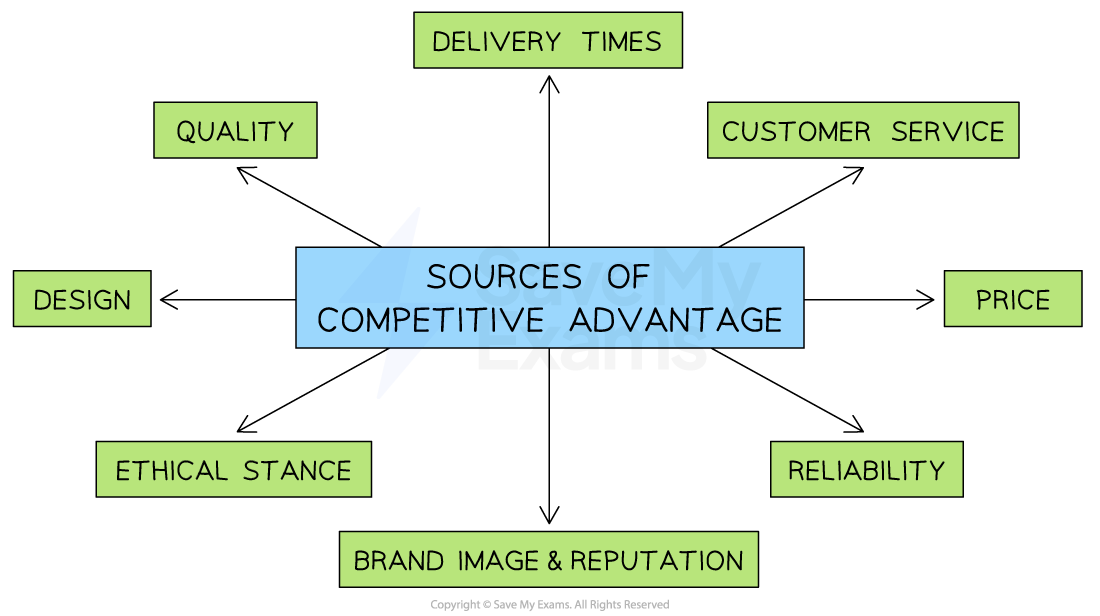- The marketing mix is a powerful tool that businesses can use to build a competitive advantage
- Competitive advantage refers to the features of a business and its products that are perceived as superior to its rivals by customers
- It is how a firm’s product is made both distinctive and defensible
- Distinctive means that it is different from the competitors
- Defensible means that the business can prevent competitors from copying it

Some of the main sources of Competitive Advantage
- There are many ways a firm can gain competitive advantage including innovation, reputation (branding), and building strong relationships with stakeholders, adding value, differentiation, market segmentation and price leadership
- Examples of the source of businesses competitive advantage include:
- Quality e.g. Audi is well known for the exceptional quality of the finishing inside their cars
- Delivery times e.g. Amazon Prime delivers products within 24 hours of ordering
- Low Price e.g. Primark is considered to provide the best value/low price combination
- Reliability e.g. Apple Macs have an excellent reputation for long life and reliability
- Ethical stance e.g. Tony's Chocolonely only uses cocoa in their chocolate which is 100% free of slave/child production
- Design e.g. Dyson vacuum cleaners stand out from the crowd with their original design
An Integrated Marketing Mix
- An integrated marketing mix is one which correctly combines each element in the best possible way
- It can help to build a competitive advantage by creating a cohesive marketing strategy that resonates with customers and sets the business apart from its competitors
Nike is an Example of Business with an Integrated Marketing Mix
| Product |
Price |
- The company's products are known for their high quality and innovative design
- This has helped to create a perception of exclusivity and quality
|
- Nike's pricing strategy is focused on premium prices that reflect the value of the product
- This reinforces the brand's premium positioning
|
| Promotion |
Place |
- Nike's promotion strategy is focused on creating a unique brand image and messaging that resonates with its target audience
- E.g. The company's "Just Do It" campaign is focused on celebrating athleticism and determination
- This aligns with the brand's reputation for being a leader in sports apparel
|
- Nike's distribution strategy is focused on creating a seamless online and offline shopping experience
- This makes it easy for customers to purchase the brand's products
|


